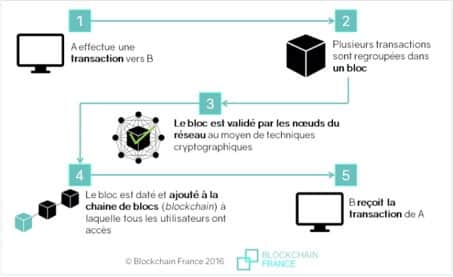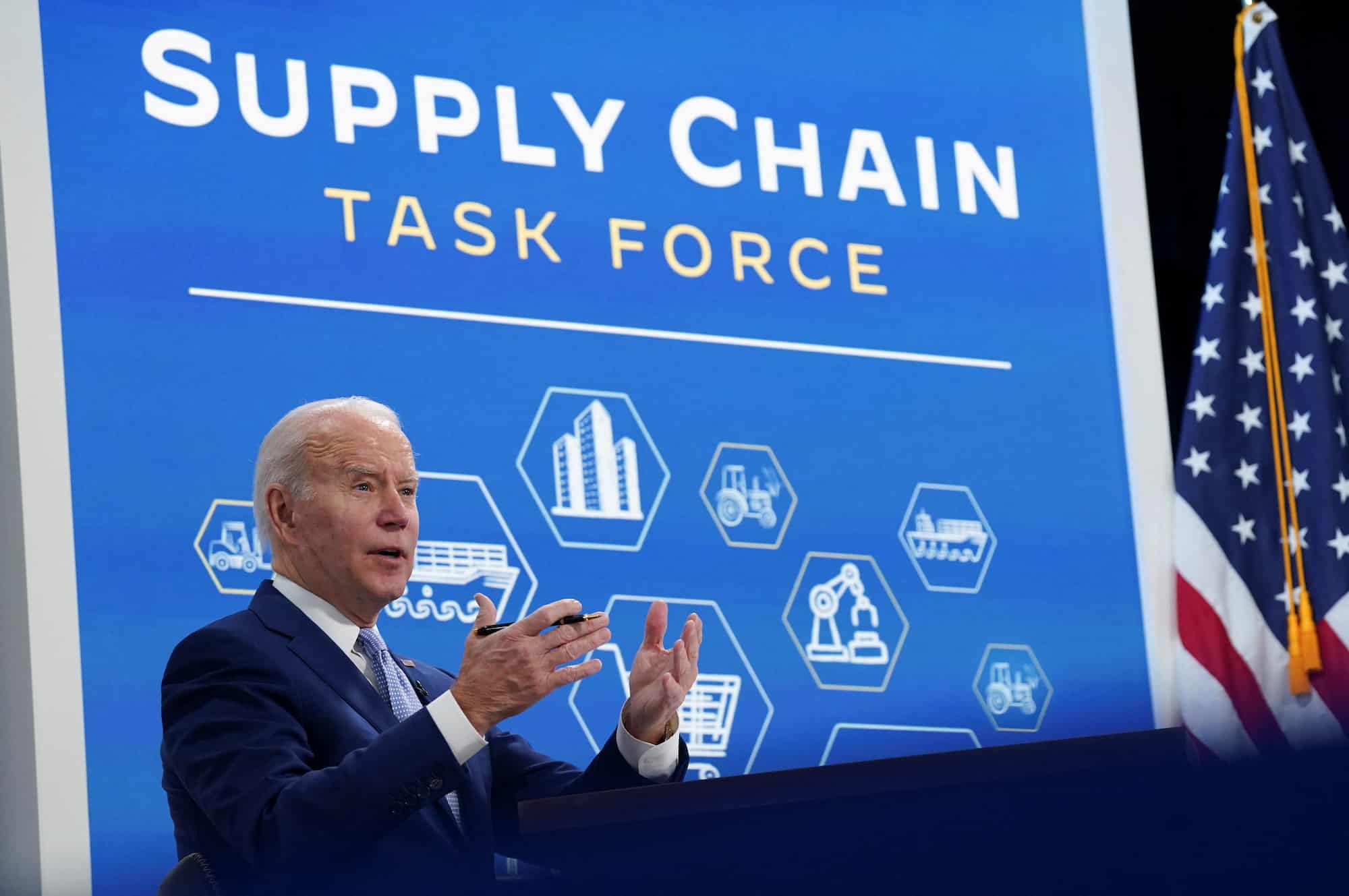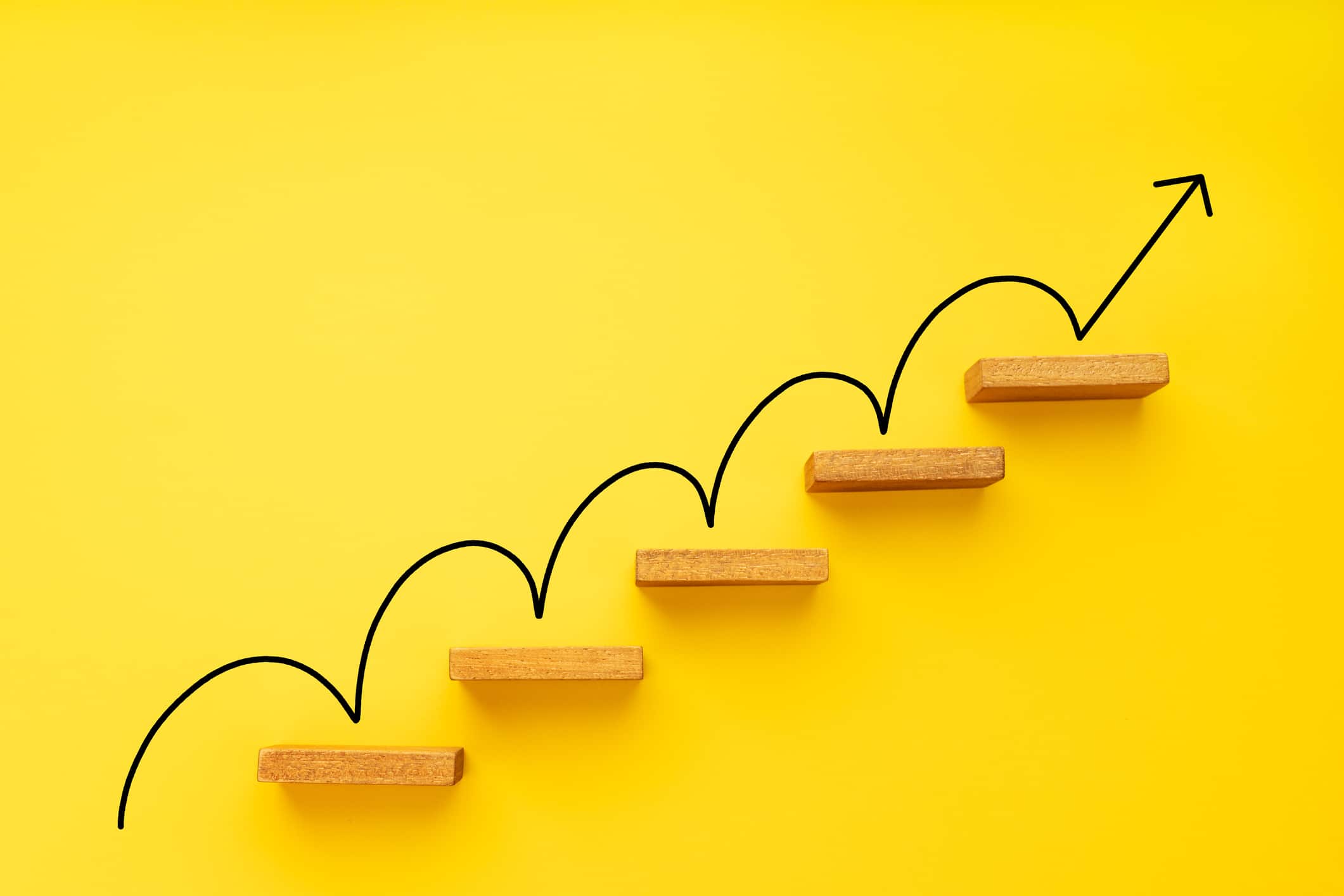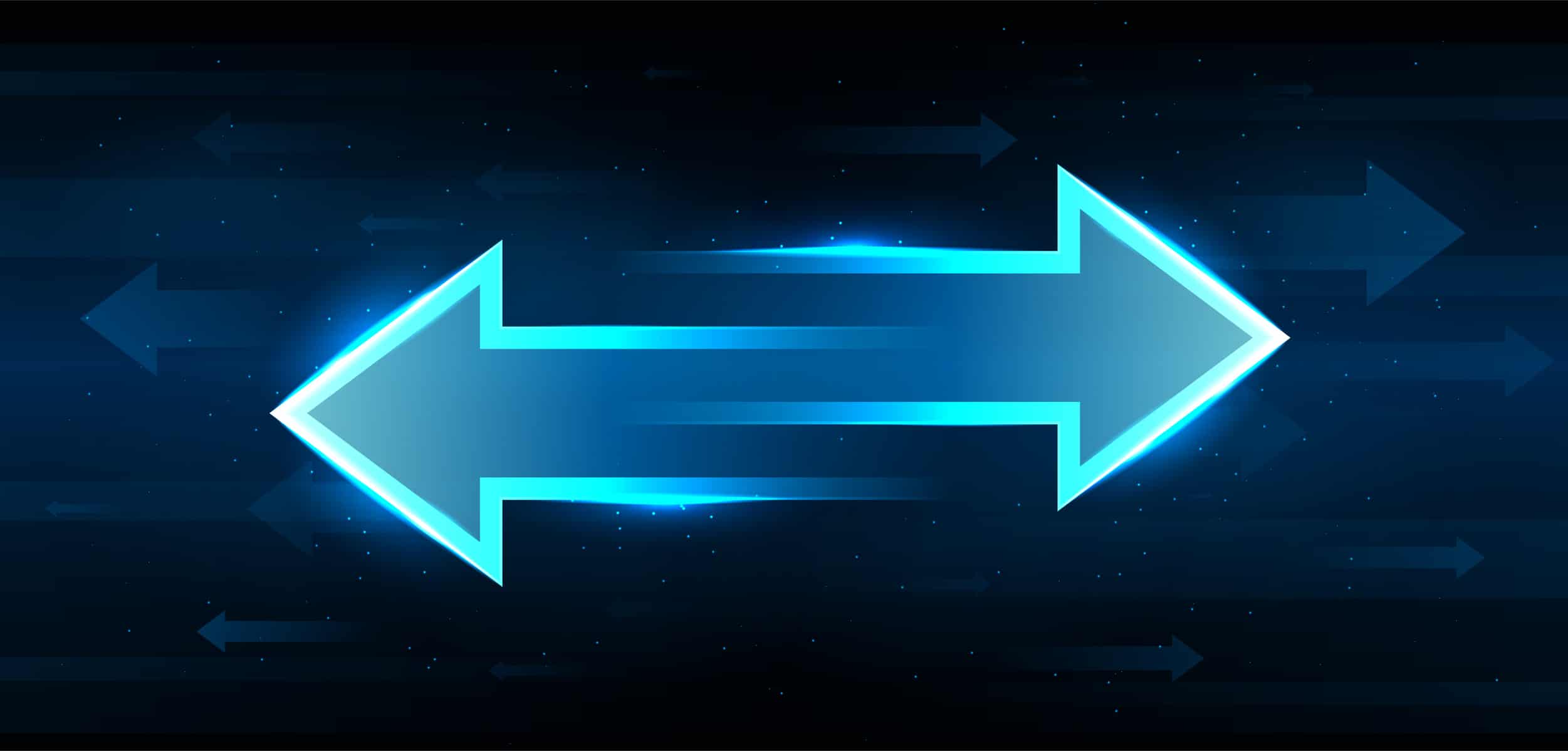The Blockchain, everyone’s talking about it…
It’s the subject that stirs people up, that questions, that almost fascinates.
Blockchain and Bitcoin were born together in 2008, they are inseparable and they reinvent the relationship of trust between actors of the professional world. Claire Balva, the co-founder of Blockchain France says: “Blockchain changes the very notion of trust”, so we are expecting a small tidal wave in our practices and businesses.

But concretely how does the Blockchain revolution take place? And what does it consist of?
It is defined as a technology for storing and transmitting information that is transparent, secure, and operates without a central control body. A blockchain is a database that contains the history of all exchanges between its users since its creation. This database is secure and distributed: it is shared by its various users, without any intermediary, allowing each user to check the validity of the chain. It is the actors of the network, called minors, who validate the data (in particular the transactions) inserted in a blockchain.
The information contained in the blocks is protected by cryptographic processes that prevent users from modifying it afterwards.

This concept, which is reputed to be transparent and forgery-proof, is based on autonomy and mutual trust which promises much broader applications than digital currency alone. With large fields of application (banking, insurance, health and pharmaceutical industry, agri-food, luxury goods, international trade, distribution, wine, aeronautics, automotive, music industry, energy, real estate, voting, etc.) it is even difficult to fully grasp the possibilities of this technology.

The digital revolution is taking place, the roles of intermediaries and entrenched practices are being redefined.
The field of possibilities is open.
Blockchain, Supply Chain: same fight.
How does the Blockchain fit into the Supply Chain domains? What challenges can it help to address?
It would be easy to consider visibility, simplicity and speed as being the main assets of the Blockchain for the Supply Chain.
The challenge of the Blockchain is to make available and secure the important shared information simultaneously to all the many stakeholders in a Supply Chain: suppliers, customers, shippers, recipients, forwarders, service providers or customs actors.
The result is greater simplicity, visibility and speed in the exchanges (both physical and information), offering better control of the Supply Chain, increased trust between the different links and financial savings thanks to efficient coordinated work.
On the one hand exchanges will be accelerated and on the other hand costs will be reduced. But what is expected more particularly from the Blockchain is a significant improvement in terms of flows traceability and transparency.
In complex Supply Chains, the traceability of goods is a key issue. An efficient Supply Chain needs to know the exact path of its goods. But not only. It also needs to accurately detect the sources of failures throughout the chain, tracing the product’s path at every stage of distribution. The precise and complete product data entered in the Blockchain will now make this possible.
In addition to quickly identifying, analyzing and addressing problems at its source, it will be possible to study industrial certifications, track hazardous components, detect hazardous and non-compliant storage conditions, etc. With that in mind, SGS, the global specialist in inspection and certification, has teamed up with Transparency-One to take picture the Supply Chain at every level, collecting all certificates from suppliers and verifying them, without working on batch issues.
If traceability is often perceived only from the point of view of constraint and control through risk reduction and compliance with legislation, the use of traceability data proves to be a real tool for enhancing and promoting brands to the consumer! Today we are talking about positive traceability.
Moreover, benefiting from total traceability of products at all stages of the Supply Chain also means avoiding fraud and counterfeiting.
With the cost of food fraud amounting to $40 billion per year and some 600 million people being victims of food poisoning every year, the arrival of the Blockchain will undoubtedly reduce these figures through the confidence it will bring in transactions and events within a networked community.
In terms of food safety, the actors of Blockchain are working on the crucial issue of traceability as Nicolas Guarino, the founder of Ethikchain, explains: “We allow all physical products to have a digital identity that proves their authenticity and origin throughout their journey, from fork to fork”. Also, the American giant Walmart is testing this distributed and decentralized register technology with IBM’s Blockchain solutions on its pork meat from China.
To sum up, the major benefits expected from the Blockchain in Supply Chain are the 5 following aspects:
- Increase in the speed of exchanges (physical, information, financial flows)
- Cost reduction
- Better traceability
- Increased trust between the different actors
- Reducing fraud and counterfeiting

Blockchain: current status ?
The growing interest in Blockchain has led to numerous experiments, initiatives and start-ups all over the world.
In Switzerland, the Swiss Blockchain Association was created and already has about twenty members who aim to collectively promote the Blockchain on the territory and the pole position of the Swiss Confederation in Blockchain innovation.
Apart from the case of digital money, the Blockchain is still at the experimental stage in the other numerous fields. Experimenting now makes it possible to develop future standards and protocols. Nothing will be done in a finger snap, it will take time. Time to collaborate and harmonize the digital revolution.
“(…) We need to create a favorable environment – a unique and digital market for the Blockchain so that all citizens can benefit, instead of a patchwork of initiatives. The EU Blockchain Observatory and Forum is an important step in this direction.” said Mariya Gabriel, European Commissioner for the Digital Economy and Society.
Of course, any sudden change has its immediate limits.
First of all, there are questions about the reliability of the system. The size of the Blockchain is set to grow at an exponential rate over the next few years. Will the tool then be able to cope with the load of several million requests? Will it be easy to use the interfaced programs to simplify data transfer and allow the efficient integration of the entire network of stakeholders?
Another real challenge is the human factor. We change the game with Blockchain. We are industrializing data entry. The challenge will also be to convince the players and prepare them for that change, to discipline them in the approach of data digitization for an optimized efficiency of the business.
Furthermore, the Blockchain does not guarantee that the information deposited by a link in the chain is correct. How can we guarantee reliable and measured maintenance but also data security at all costs? It is possible to associate the Blockchain with other technologies such as IoTs (connected objects) which, by monitoring and controlling data in real time, will act as a safeguard for the information provided in the database. And of course, companies are already in this promising niche…
Awareness in progress: the Blockchain revolution, we must prepare for it!
It suggests that the human intermediary will one day be truly supplanted by technology. Because of its infallible character, it will eventually be present in almost all areas of our lives, both professional and private. And we understand that the collective game will be a key to mastery, optimization and success. Especially for the Supply Chain, which will deriveundeniable benefits from the blockchain through better control of the value chain and the performance that accompanies it. Now it remains to be seen when!
Glossary:
POC (proof of concept): demonstration of feasibility
Smart contracts: these are stand-alone programs that automatically execute the terms and conditions of a contract validated by the parties involved, without the need for human intervention once started.
The Blockchain, everyone’s talking about it…
It’s the subject that stirs people up, that questions, that almost fascinates.
Blockchain and Bitcoin were born together in 2008, they are inseparable and they reinvent the relationship of trust between actors of the professional world. Claire Balva, the co-founder of Blockchain France says: “Blockchain changes the very notion of trust”, so we are expecting a small tidal wave in our practices and businesses.

But concretely how does the Blockchain revolution take place? And what does it consist of?
It is defined as a technology for storing and transmitting information that is transparent, secure, and operates without a central control body. A blockchain is a database that contains the history of all exchanges between its users since its creation. This database is secure and distributed: it is shared by its various users, without any intermediary, allowing each user to check the validity of the chain. It is the actors of the network, called minors, who validate the data (in particular the transactions) inserted in a blockchain.
The information contained in the blocks is protected by cryptographic processes that prevent users from modifying it afterwards.

This concept, which is reputed to be transparent and forgery-proof, is based on autonomy and mutual trust which promises much broader applications than digital currency alone. With large fields of application (banking, insurance, health and pharmaceutical industry, agri-food, luxury goods, international trade, distribution, wine, aeronautics, automotive, music industry, energy, real estate, voting, etc.) it is even difficult to fully grasp the possibilities of this technology.

The digital revolution is taking place, the roles of intermediaries and entrenched practices are being redefined.
The field of possibilities is open.
Blockchain, Supply Chain: same fight.
How does the Blockchain fit into the Supply Chain domains? What challenges can it help to address?
It would be easy to consider visibility, simplicity and speed as being the main assets of the Blockchain for the Supply Chain.
The challenge of the Blockchain is to make available and secure the important shared information simultaneously to all the many stakeholders in a Supply Chain: suppliers, customers, shippers, recipients, forwarders, service providers or customs actors.
The result is greater simplicity, visibility and speed in the exchanges (both physical and information), offering better control of the Supply Chain, increased trust between the different links and financial savings thanks to efficient coordinated work.
On the one hand exchanges will be accelerated and on the other hand costs will be reduced. But what is expected more particularly from the Blockchain is a significant improvement in terms of flows traceability and transparency.
In complex Supply Chains, the traceability of goods is a key issue. An efficient Supply Chain needs to know the exact path of its goods. But not only. It also needs to accurately detect the sources of failures throughout the chain, tracing the product’s path at every stage of distribution. The precise and complete product data entered in the Blockchain will now make this possible.
In addition to quickly identifying, analyzing and addressing problems at its source, it will be possible to study industrial certifications, track hazardous components, detect hazardous and non-compliant storage conditions, etc. With that in mind, SGS, the global specialist in inspection and certification, has teamed up with Transparency-One to take picture the Supply Chain at every level, collecting all certificates from suppliers and verifying them, without working on batch issues.
If traceability is often perceived only from the point of view of constraint and control through risk reduction and compliance with legislation, the use of traceability data proves to be a real tool for enhancing and promoting brands to the consumer! Today we are talking about positive traceability.
Moreover, benefiting from total traceability of products at all stages of the Supply Chain also means avoiding fraud and counterfeiting.
With the cost of food fraud amounting to $40 billion per year and some 600 million people being victims of food poisoning every year, the arrival of the Blockchain will undoubtedly reduce these figures through the confidence it will bring in transactions and events within a networked community.
In terms of food safety, the actors of Blockchain are working on the crucial issue of traceability as Nicolas Guarino, the founder of Ethikchain, explains: “We allow all physical products to have a digital identity that proves their authenticity and origin throughout their journey, from fork to fork”. Also, the American giant Walmart is testing this distributed and decentralized register technology with IBM’s Blockchain solutions on its pork meat from China.
To sum up, the major benefits expected from the Blockchain in Supply Chain are the 5 following aspects:
- Increase in the speed of exchanges (physical, information, financial flows)
- Cost reduction
- Better traceability
- Increased trust between the different actors
- Reducing fraud and counterfeiting

Blockchain : current status ?
The growing interest in Blockchain has led to numerous experiments, initiatives and start-ups all over the world.
In Switzerland, the Swiss Blockchain Association was created and already has about twenty members who aim to collectively promote the Blockchain on the territory and the pole position of the Swiss Confederation in Blockchain innovation.
Apart from the case of digital money, the Blockchain is still at the experimental stage in the other numerous fields. Experimenting now makes it possible to develop future standards and protocols. Nothing will be done in a finger snap, it will take time. Time to collaborate and harmonize the digital revolution.
“(…) We need to create a favorable environment – a unique and digital market for the Blockchain so that all citizens can benefit, instead of a patchwork of initiatives. The EU Blockchain Observatory and Forum is an important step in this direction.” said Mariya Gabriel, European Commissioner for the Digital Economy and Society.
Of course, any sudden change has its immediate limits.
First of all, there are questions about the reliability of the system. The size of the Blockchain is set to grow at an exponential rate over the next few years. Will the tool then be able to cope with the load of several million requests? Will it be easy to use the interfaced programs to simplify data transfer and allow the efficient integration of the entire network of stakeholders?
Another real challenge is the human factor. We change the game with Blockchain. We are industrializing data entry. The challenge will also be to convince the players and prepare them for that change, to discipline them in the approach of data digitization for an optimized efficiency of the business.
Furthermore, the Blockchain does not guarantee that the information deposited by a link in the chain is correct. How can we guarantee reliable and measured maintenance but also data security at all costs? It is possible to associate the Blockchain with other technologies such as IoTs (connected objects) which, by monitoring and controlling data in real time, will act as a safeguard for the information provided in the database. And of course, companies are already in this promising niche…
Awareness in progress: the Blockchain revolution, we must prepare for it!
It suggests that the human intermediary will one day be truly supplanted by technology. Because of its infallible character, it will eventually be present in almost all areas of our lives, both professional and private. And we understand that the collective game will be a key to mastery, optimization and success. Especially for the Supply Chain, which will deriveundeniable benefits from the blockchain through better control of the value chain and the performance that accompanies it. Now it remains to be seen when!
Glossary:
POC (proof of concept): demonstration of feasibility
Smart contracts: these are stand-alone programs that automatically execute the terms and conditions of a contract validated by the parties involved, without the need for human intervention once started.
Need more information ? Contact us




